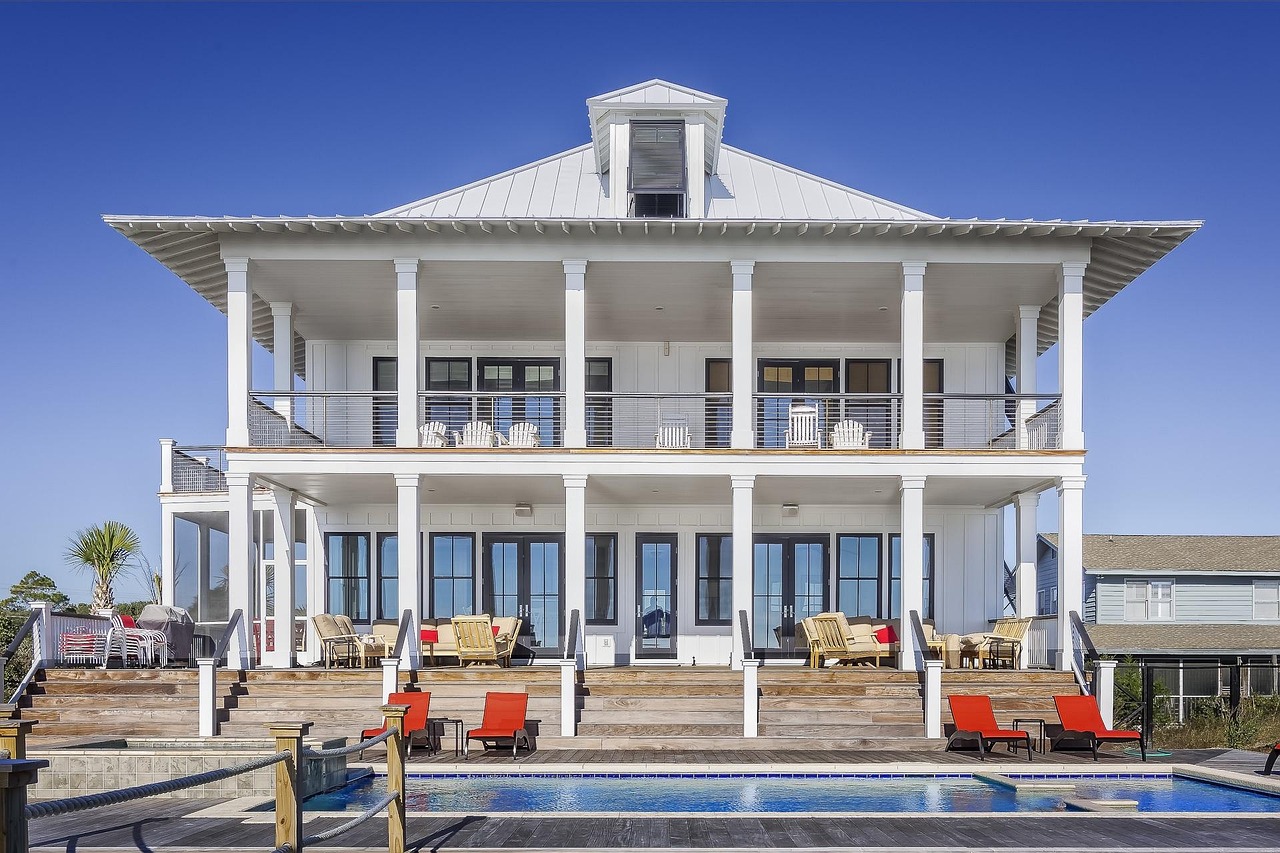
You might ask what are admitted vs non admitted insurance carriers. Admitted carriers must follow state rules. Non admitted carriers have more freedom. In the Lowcountry, you see more non admitted carriers. This happens because:
Big admitted carriers offer less, so there are fewer choices.
Homeowners use these carriers as the market changes.
Knowing what are admitted vs non admitted insurance carriers helps you choose well. Many people in 2025 ask what are admitted vs non admitted insurance carriers. The right answer can help protect your home.
Key Takeaways
Admitted insurance carriers follow state rules. They give extra protection like state guaranty funds. They work best for homes in safe areas. These homes have steady prices. The claims process is clear and simple.
Non-admitted carriers do not have state licenses. They offer flexible coverage for risky or special homes. These homes are often near the coast. They do not have state-backed financial protection.
Picking the right carrier depends on your home’s risk. Always ask your agent about coverage details. Ask about the company’s strength. Ask about their claims history. This helps you make a smart choice.
What Are Admitted vs Non Admitted Insurance Carriers?

Admitted Carriers Defined
You might wonder how an admitted insurance carrier is different. Admitted carriers have a license from the state insurance department. The state checks their business, money, and policy forms. The state makes rules for these carriers to follow, so you get more protection.
Tip: If your admitted carrier fails, the state guaranty fund can help you. This fund helps if the company cannot pay your claims.
Admitted carriers must follow strict rules. The state looks at their rates and policy forms before they sell insurance. This helps make sure you are treated fairly. You also get protections like clear claims steps and money checks.
Here is what you get with admitted carriers:
State licensing and rules
Approval of rates and policy forms
Access to state guaranty funds
Extra protections for customers
Admitted carriers help keep the insurance market steady. They make things fair and clear for homeowners. In the Lowcountry, there are fewer admitted carriers now, especially for Hilton Head coastal homeowners insurance. Some big companies left or do less business here.
Knowing what are admitted vs non admitted insurance carriers helps you see why this matters.
Non-Admitted Carriers Defined
Non-admitted carriers are also called surplus lines or E&S carriers. They do not have a state license. They do not follow the same rules as admitted carriers. They can set their own rates and policy terms. You may need a non-admitted carrier if admitted carriers will not cover you.
Non-admitted carriers are important in the Lowcountry. Many homes near the coast have higher risks, like hurricanes or floods, which often require flood insurance beyond NFIP. Admitted carriers may not want to insure these homes.
Non-admitted carriers fill this gap. They offer insurance for special, high-risk, or hard-to-insure homes.
Note: Non-admitted carriers do not give you access to state guaranty funds. If the company fails, you may not have the same help as with admitted carriers.
You still get some protection with non-admitted carriers. They must meet some money rules, but the state does not check their rates or policy forms. This lets them cover risks that admitted carriers avoid.
Here is what you should know about non-admitted carriers:
No state license or direct rules
Freedom to set rates and policy terms
No access to state guaranty funds
Focus on high-risk or special homes
You might feel unsure about using a non-admitted carrier. In the Lowcountry, these carriers are common and help many people get insurance. Non-admitted is not bad, but you should know the difference. Knowing what are admitted vs non admitted insurance carriers helps you make good choices for your home.
Key Differences
Licensing and Regulation
It is important to know how licensing works for these carriers. Admitted carriers must get a license from the state. The state checks their rates and business practices. This helps keep insurance fair for everyone. Non-admitted carriers do not have a state license. They follow different rules in each state. Some states use online systems. Other states use more paperwork and harder steps. This makes the process less the same everywhere.
Here is a table that shows the main differences in regulation:
Aspect | Admitted Carriers | Non-Admitted (E&S) Carriers |
|---|---|---|
Regulatory Approval | State must approve rates and forms | No uniform approval; rules vary by state |
Tax Filing & Fees | Standardized in most states | Varies by state; different fees and deadlines |
Filing Systems | Uniform and regulated | Some states use modern portals, others use complex systems |
Customer Service & Compliance | Consistent due to regulation | Varies; some states offer better support than others |
Legislative Impact | Regulated by state insurance departments | Affected by federal laws like NRRA, but no national system |
Market Impact | Rate limits can push carriers out | Fill gaps left by admitted carriers, especially in high-risk areas |
Challenges | Approval constraints | Complex, state-specific rules |
Opportunities | Stable framework | Room for innovation if rules improve |
In the Lowcountry, you see more non-admitted carriers. This is because admitted carriers often leave high-risk places. Non-admitted carriers fill the gap for property and casualty insurance near the coast.
Tip: Non-admitted does not mean unsafe. It just means the carrier follows different rules.
Policy Protections
You want to feel safe with your insurance. Admitted carriers give extra protection with state guaranty funds. Every state has a guaranty fund. If your admitted carrier goes bankrupt, the fund pays claims. This is a backup for your insurance.
Admitted carriers must join the state guaranty fund.
If an admitted carrier fails, the fund pays claims to help you.
The fund may not pay the full amount, but it helps cover losses.
Non-admitted carriers do not join state guaranty funds. If a non-admitted carrier fails, you do not get the same backup. You need to know this before you choose a policy.
Note: State guaranty funds only protect you with an admitted carrier. Non-admitted carriers do not offer this safety net.
Claims and Reliability
You want your insurance to work when you need it. Admitted carriers must follow state rules for claims. The state checks their claims process. This helps make sure you get fair treatment. It gives you more trust in your insurance.
Non-admitted carriers handle claims on their own. The state does not check their claims process. Some non-admitted carriers pay claims quickly. Others may not. You should ask your agent about the claims history of any non-admitted carrier.
In the Lowcountry, many homes use non-admitted carriers for property and casualty insurance. These carriers help when admitted carriers leave the market. You should not fear non-admitted carriers, but you should know how claims and protection are different.
If you live near the coast, you may need a non-admitted carrier. Ask questions about claims and reliability before you buy.
Admitted Carriers vs Non-Admitted Carriers: Pros and Cons

Admitted: Advantages and Disadvantages
Picking an admitted insurance carrier gives you some big benefits. The state checks and approves all rates and policy forms. This helps keep you safe and calm. If your admitted carrier fails, the state guaranty fund can help pay claims. You also get clear rules for claims and customer service.
Advantages of admitted carriers:
State licensing and oversight help keep you safe.
The state guaranty fund gives you a backup.
Claims must follow strict state rules.
Policy forms and rates must be fair and approved.
But admitted carriers have problems, especially in risky places like the coastal Lowcountry. State rules make it hard for them to change rates fast. In areas with hurricanes or wildfires, admitted carriers may leave or stop renewing policies. You might see fewer admitted choices and higher prices in these places.
Disadvantages of admitted carriers:
Slow rate changes make it hard to adjust.
Fewer admitted carriers write policies in risky areas.
State guarantees do not fix high prices or lack of options.
If you live near the coast, you may see fewer admitted choices each year.
Non-Admitted: Advantages and Disadvantages
Non-admitted carriers are important in the Lowcountry, especially for homes near water or in risky spots. These carriers do not need state approval for rates or policy forms. This freedom lets them act fast and offer coverage when admitted carriers cannot.
Advantages of non-admitted carriers:
Quick response to disasters or new risks.
Custom policies for homes with special needs or past claims.
Good choice when admitted carriers leave the market.
Non-admitted carriers do not give you access to the state guaranty fund. If a non-admitted carrier fails, you may not have the same backup. You should always ask about the financial strength and claims history of any non-admitted carrier.
Disadvantages of non-admitted carriers:
No state guaranty fund protection.
Policy terms and rates may change more often.
Claims processes are different for each company.
Some people feel less safe without state rules.
Many Lowcountry homeowners use non-admitted carriers for peace of mind. These carriers fill gaps and help protect homes that admitted carriers will not cover.
When to Choose Admitted or Non-Admitted
Common Scenarios for Admitted Carriers
You should pick an admitted carrier if your home is not risky. These carriers work best for homes in safe places. If your house is new and you have no claims, you can get admitted insurance. Living far from the coast also helps you qualify. Admitted carriers are good if you want extra help from the state and clear rules for claims.
Tip: Admitted carriers usually give steady prices and simple rules for safe homes.
Common Scenarios for Non-Admitted Carriers
Non-admitted carriers help when admitted carriers say no. You may need non-admitted insurance if your home is in a risky place. This includes homes near the coast or where floods and hurricanes happen. Non-admitted carriers also cover old homes or homes with special features. If your home has had many claims, you might need non-admitted coverage.
You might need non-admitted coverage if:
Your home is in a hurricane, wildfire, or flood area.
You have made many claims before.
Your home has special risks or features.
Admitted carriers have left or will not insure your area.
In the Lowcountry, non-admitted carriers now cover many coastal homes. They help when admitted carriers leave and stop writing policies.
Deciding What’s Right for You
You should think about where your home is and its history before you choose. In 2025, more people in places like California and Florida use non-admitted carriers. This is because admitted carriers leave risky areas. For example, California homeowners use non-admitted carriers because of wildfires and high costs. The Lowcountry has the same problem, so non-admitted carriers may be your best or only choice.
Remember: Non-admitted does not mean unsafe. It means the carrier can cover risks that admitted carriers cannot. Always ask your agent about claims and money strength before you choose — working with an independent insurance agent ensures you get unbiased options.
Questions to Ask About Admitted and Non-Admitted Insurance
Key Questions for Your Agent
When you look for insurance in the Lowcountry, you should ask your agent good questions. This helps you know what you are getting, no matter if the carrier is admitted or non-admitted. Here are some questions you should ask:
Do I have enough coverage to rebuild my home today?
Does my policy protect other buildings on my land?
Will my things be covered inside and outside my home?
Are there extra coverages or endorsements I should get?
Tip: Always ask about how strong the carrier is with money. You can check ratings from groups like AM Best. This is important for both admitted and non-admitted carriers.
Understanding Your Policy
You should look over your policy before you choose. Admitted carriers have state support, so you have help if the company fails. Non-admitted carriers do not have this backup, but they often cover special or high-risk homes, especially near the coast.
Check these things when you compare policies:
State protection and rules
What is covered, including special risks
How much it costs and how prices are set
How strong the company is with money
What is not covered, limits, and endorsements
Look at all fees and policy words closely. Non-admitted policies may have more papers or extra costs, but they help fill gaps in the Lowcountry. Always talk to a trusted agent to help you pick the best choice for you.
You need to understand how admitted and non-admitted carriers are different.
Aspect | Admitted | Non-Admitted |
|---|---|---|
State Protection | Yes | No |
Policy Flexibility | Limited | High |
Non-admitted carriers are still used a lot in the Lowcountry. Check your policy every year. Ask your agent questions. Pick coverage that matches your home’s risks in 2025.
FAQ
What if my non-admitted carrier leaves the Lowcountry market?
You can get a new carrier. There are still many non-admitted companies on the coast. Ask your agent to help you if you need to change.
Are non-admitted carriers safe for my home insurance?
Non-admitted carriers must follow money rules. Many have good ratings. You should look at their money strength and claims record before you buy.
Why do so many Lowcountry homes use non-admitted carriers?
Admitted carriers often leave places with high risks near the coast.
Non-admitted carriers step in and give coverage when others will not.
You have choices for special or high-risk homes.
